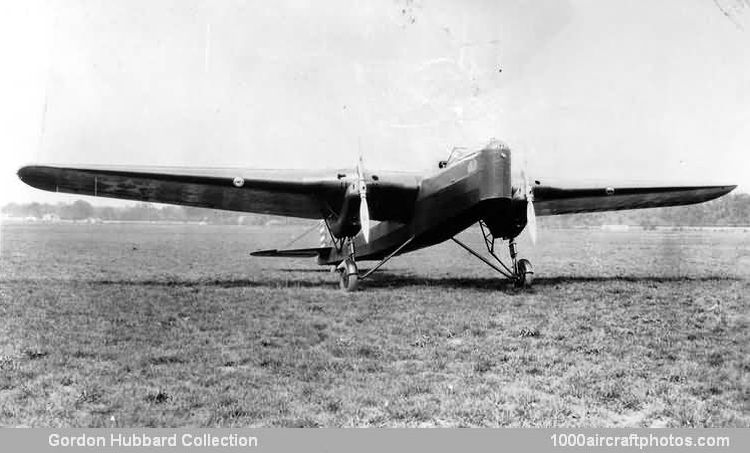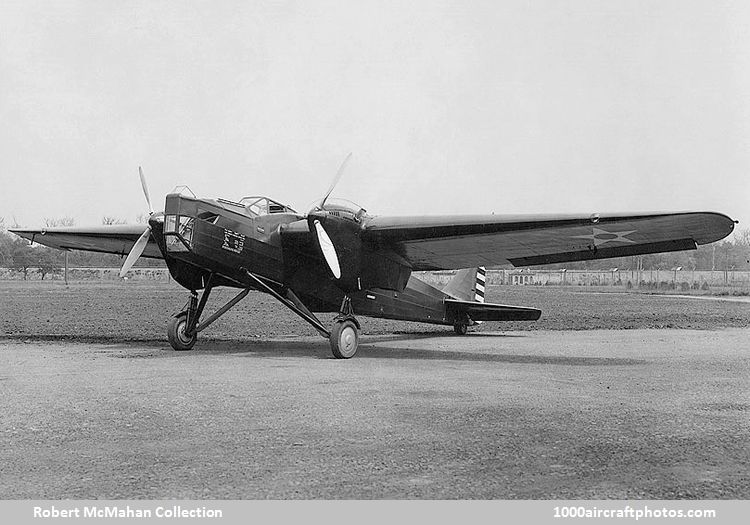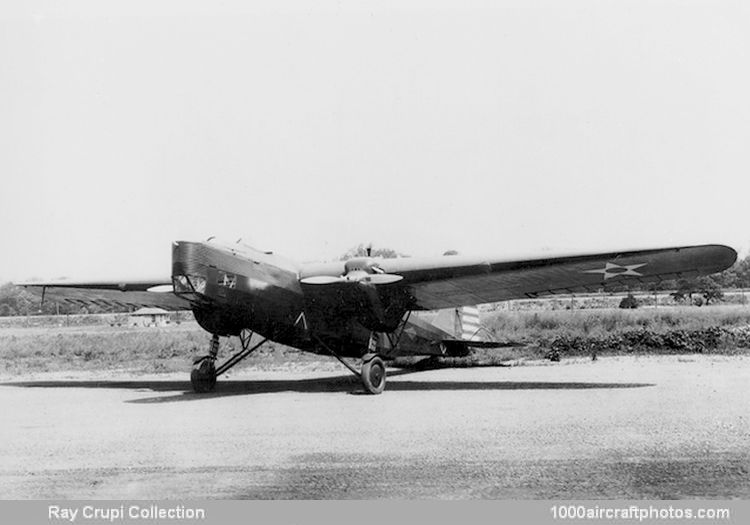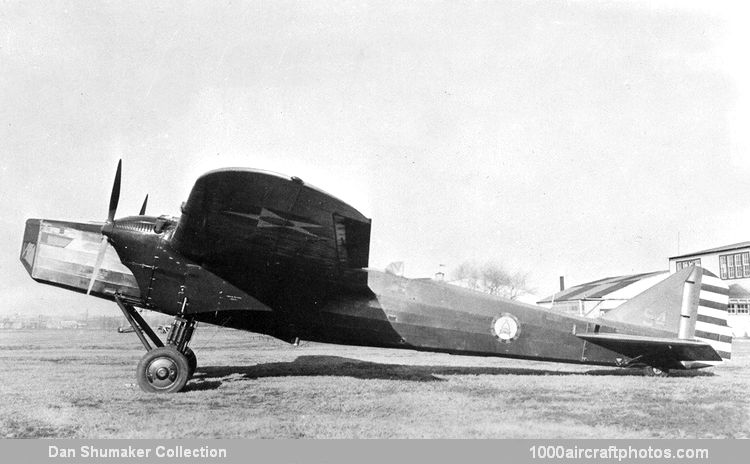12/31/2011. Remarks by
Johan Visschedijk: "In 1929, the design department of Fokker Aircraft Corporation of Teterboro, New Jersey, USA developed an observation aircraft, designated Model 16. The cantilever monoplane had a high-mounted wing made of wooden box spars with plywood spars and ribs, covered with a plywood veneer, it had no struts or rigging wires. In the leading edge of the wing was mounted a pair of Curtiss V-1570-9 Conqueror twelve-cylinder liquid-cooled engines. The fuselage was made of steel tubing and was covered with fabric.
It had a retractable landing gear, the first such to be fitted to an USAAC observation or bombardment aircraft. The main gear members retracted backwards into the rear engine nacelles, but the wheels remained only partially enclosed. The pilot and two gunners were carried in open cockpits. Armament was to consist of two flexible 0.30 in (7.62 mm) machine guns, one in a nose position and one in a dorsal position.
On June 19, 1929, the USAAC ordered two prototypes, designated XO-27, with s/n 29-327, 29-328. The performance of the XO-27 promised to greatly exceed that of the standard USAAC Keystone biplane light bomber. Consequently, in 1929 the USAAC decided to have the second prototype completed as a light bomber rather than as an observation plane, the designation XB-8 was assigned to the Fokker design.
In 1930, Fokker-America was absorbed by the General Aviation Corporation, which was a subsidiary of General Motors, the large automobile manufacturing concern. The XO-27 (s/n 29-327) was first tested at Wright Field on October 20, 1930.
XO-27A (29-327) (
Robert McMahan Collection)
Subsequently the XO-27 was fitted with an enclosure over the pilot's cockpit and was fitted with geared V-1570-29 engines, being redesignated XO-27A.
XB-8 (29-328) (
Ray Crupi Collection)
The XB-8 was delivered to Wright Field at Dayton, Ohio in February of 1931. After completing only a few flights, the XB-8 was damaged in an accident, after repairs test flights resumed.
On April 11, 1931, the company received a contract for six service test B-8s, two YB-8s and four Y1B-8s (s/n 31-587 to 31-592), while on May 13, 1931, six service test Y1O-27s were ordered (s/n 31-598 to 31-603). These were initially fitted with 600 hp Curtiss GIV-1570C Conquerors, but these were replaced during December 1932 with GIV-1570F (V-1570-29) geared units.
YO-27 (
Dan Shumaker Collection)
However, the XB-8 proved inferior to the competing Douglas XB-7, and the contract for the two YB-8s and four Y1B-8s was converted into a contract for six YO-27 aircraft, these were broadly similar to the Y1O-27s. The dozen production Y1O-27 and YO-27 observation aircraft were delivered to the USAAC between May 15, 1932 and January 6, 1933.
Five squadrons were ultimately equipped with these planes, two observation, two bombardment, and one pursuit squadron. These planes were operated primarily for radio practice flights, night navigation training, and long-distance cross-country practice flights.
There were numerous accidents, most of which were caused by landing gear failures. However, the aircraft was relatively easy to fly, with no vicious flight characteristics. Surviving YO-27s were surveyed and scrapped during the mid-1930s and none survive today."



